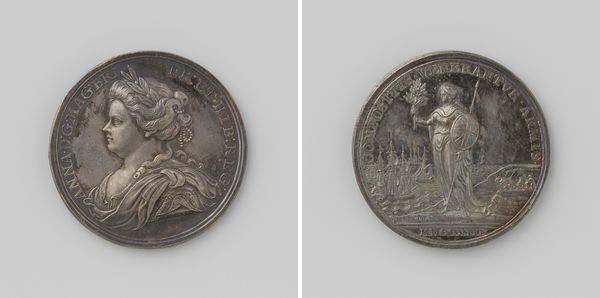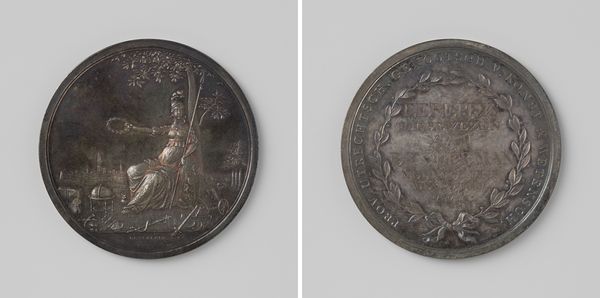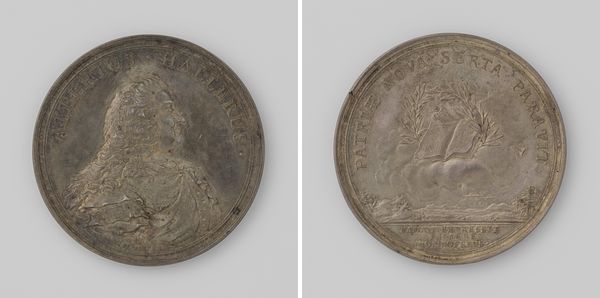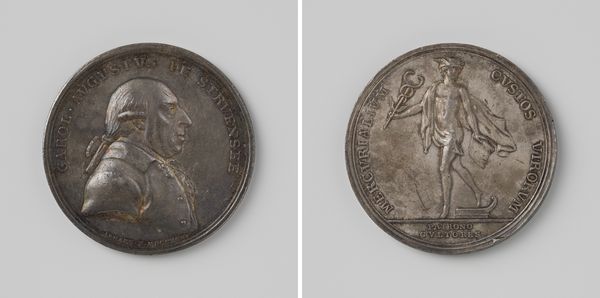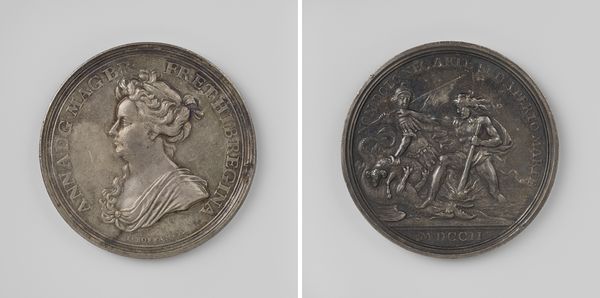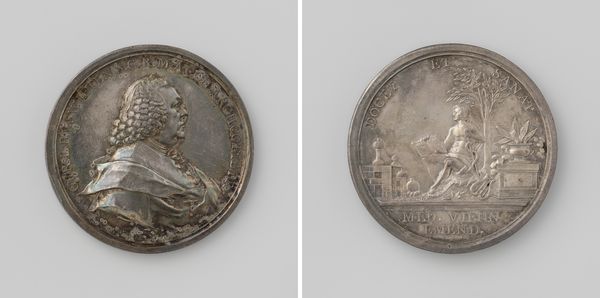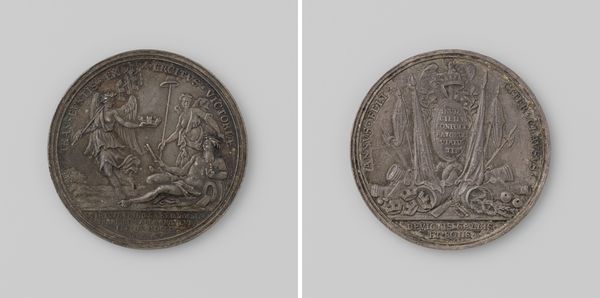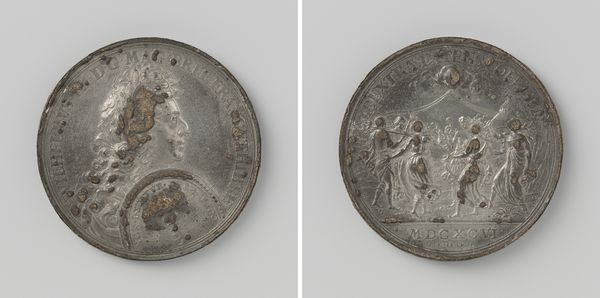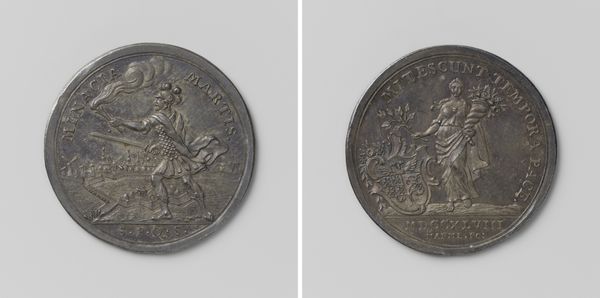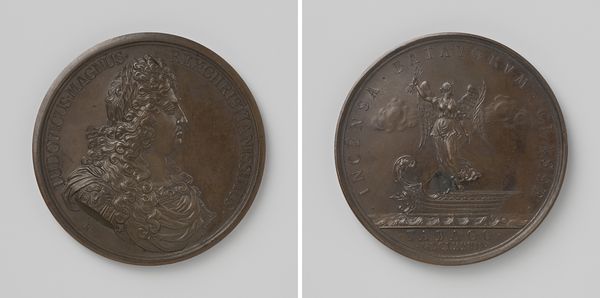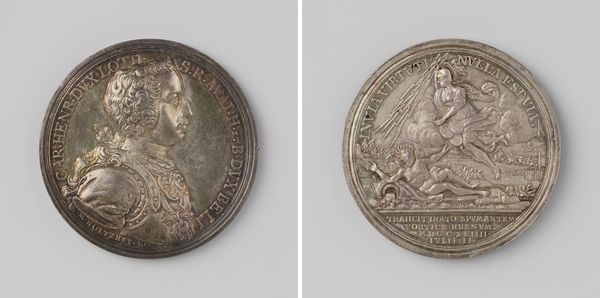
metal, relief, sculpture
#
portrait
#
baroque
#
metal
#
sculpture
#
relief
#
sculpture
#
history-painting
Dimensions: diameter 7.3 cm, weight 1395 gr
Copyright: Rijks Museum: Open Domain
Editor: This intriguing metal relief is titled "Peace of Nijmegen," dating back to 1679. It is anonymous but currently resides in the Rijksmuseum. There’s a striking, almost celebratory air about it, wouldn't you agree? I am especially intrigued by how narrative the composition appears, with what seems to be almost a play being performed on the coin’s face. What do you see in this piece? Curator: You’ve touched on something delicious there, haven't you? It is theatrical! Consider the relief itself—it's a stage, almost literally a ‘peace of theater,’ celebrating the treaties signed in Nijmegen. And peace, well, peace is rarely simple, is it? On one side, you have the powerful ruler with that elaborate hair—probably hinting at power and grace—and the reverse is symbolic. Do you see the seated figure near what seems to be… cannonballs? Editor: Yes! He’s almost reclining amongst them. It’s… a peculiar way to depict peace. Curator: Exactly! It is as if they're repurposing tools of war for more peaceful work? Perhaps even celebrating a Dutch Golden Age, born of naval success but desiring flourishing art. Notice how that figure interacts with what's above, a floating ethereal character that appears almost godly? Do you think this hints that peace is achievable through labor or instead given by divine provenance? Editor: Hmmm... Given the religious tensions of the time, I would bet they were hedging their bets and saying 'both, and!' But this has actually been surprisingly insightful, I was merely thinking this object a record of a time of truce, not of how peace can grow in the ruins. Curator: Isn’t it fascinating? An object created to commemorate also conceals and communicates volumes beyond the surface! Every age shapes 'peace' to mean something useful to themselves. Now I'll be pondering this scene!
Comments
No comments
Be the first to comment and join the conversation on the ultimate creative platform.
